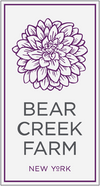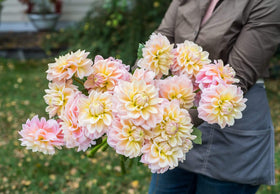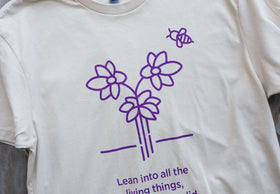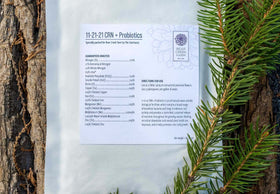It happens every year. As spring begins to arrive, the urge to plant tubers immediately is nearly unbearable. The sun is shining, the birds are chirping, and the dahlia visions are already dancing in your head. But before you start digging, let’s talk about why patience now saves heartbreak later — and what to do if your tuber seems to be hitting the snooze button.
The Trouble with Planting Too Early
Dahlias may be tough, but their tubers are divas about temperature. If the soil is too cold — below 55°F (13°C) — they won’t sprout. They’ll sit there in limbo, doing absolutely nothing. Worse, if the soil is cold and wet, the tuber could rot before it even gets a chance to grow.
If you’ve already planted early and the weather isn’t cooperating, don’t panic. If the soil is cold but dry, your tuber is just waiting for the right moment. If it’s cold and soggy, consider gently digging it up, letting it dry, and replanting when things warm up.
Where’s the Eye? Is My Tuber Blind?
Dahlia tubers need a viable eye to sprout. The eye is the tiny growing point—usually a small bump—that will eventually push out a stem. But sometimes, tubers play coy. Eyes can be subtle, difficult to see, slow to appear, or even hidden under old skin.
If your tuber came from a reputable supplier and the soil is warm enough, go ahead and plant it with confidence. Some eyes are hard to see, but they’re there. A warm, slightly moist environment will do the rest.
For those preferring absolute assurance before planting, you can encourage the eye to show itself first — think of it as a wake-up test.
How to Wake Up a Sleepy Tuber
If your tuber is dragging its feet (so to speak), warmth and moisture will nudge it awake. Keep it somewhere warm (around 70°F/21°C) and lightly covered with soil or slightly damp potting medium. (Putting it in a tray is just fine.)
Here’s why that last part matters:
Dahlia tubers don’t like to be left out in the open. The top part, or head/crown, where the sprout will emerge, should be lightly covered with soil, even indoors. This mimics natural growing conditions, keeping the eye moist and preventing it from drying out. A tuber left uncovered can dehydrate, struggle, or fail to grow entirely.
Think of it like tucking in a seed—just a little soil blanket to keep it cozy, not buried under a mountain.
What If It’s STILL Not Growing?
If you’ve given your tuber warmth, moisture, and time but still nothing is happening, here’s what to check:
- Neck Check - If the tuber’s neck (where it connects to the crown) is firm, it’s still viable. If it’s soft, very shriveled, or snapped off—it's likely done for.
- Patience Test - Some tubers, like certain varieties, just take their time. If the tuber is firm and not rotting, wait a bit longer.
- Soil Temperature - If it’s been planted outside, make sure the soil has warmed up. Cold soil will keep it in dormancy.
A Few Final Tips for a Smooth Start
- If you must get your hands in the dirt early, consider pre-warming your planting area with row covers or low tunnels to raise the soil temperature.
- Don’t drown your tuber in water before it sprouts. Damp is good—soggy is not.
- If your tuber is too large, don’t be afraid to trim it down. Bigger doesn’t mean better — a small, plump tuber with an eye will grow just as well.
- Once the first sprouts emerge, pinch the top when it reaches about a foot to eighteen inches tall —this encourages more branching and blooms.
Final Word: Keep Calm and Garden On
Dahlias are remarkably forgiving once they get going, so don’t stress too much. If your tuber came from a reputable source and conditions are right, trust that it will grow. A little patience ensures a season full of strong plants, abundant blooms, and the satisfaction of knowing you’ve outwitted the tuber’s natural stubbornness.
Step away from that shovel—at least until the soil warms up.





So many, many thanks for the tips
Thank you for the information. It helps to I am do thing right. DAHLIAS are the best